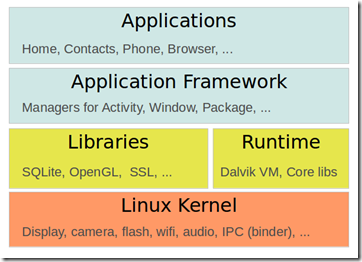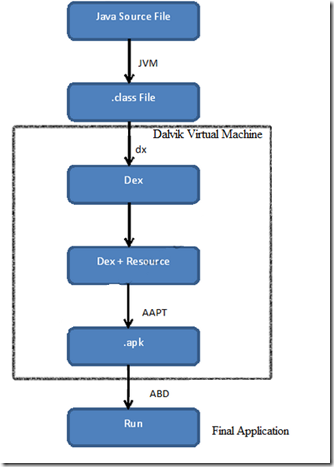Android Software Stack and Terminology (Tutorial 01)
Join the DZone community and get the full member experience.
Join For FreeThe Android system software stack is typically divided into the four areas as the following graphic:
Terminology
- Android Software Development Kit (Android SDK) contains the necessary tools to create, compile and package Android applications
- Android debug bridge (adb), which is a tool that allows you to connect to a virtual or real Android device
- Google provides two integrated development environments (IDEs) to develop new applications.
- Android Developer Tools (ADT) are based on the Eclipse IDE
- Android Studio based on the IntelliJ IDE
- Android RunTime (ART) uses Ahead Of Time compilation, and optional runtime for Android 4.4
- Android Virtual Device (AVD) - The Android SDK contains an Android device emulator. This emulator can be used to run an Android Virtual Device (AVD), which emulates a real Android phone
- Dalvik Virtual Machine (Dalvik)-
- The Android system uses a special virtual machine, Dalvik, to run Java-based applications. Dalvik uses a custom bytecode format which is different from Java bytecode.
- Therefore you cannot run Java class files on Android directly; they need to be converted into the Dalvik bytecode format.
Published at DZone with permission of Madhuka Udantha, DZone MVB. See the original article here.
Opinions expressed by DZone contributors are their own.



Comments